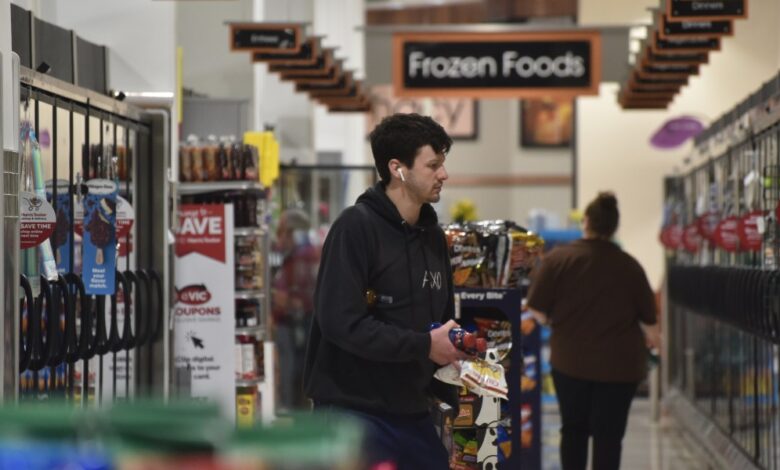A quarter of U.S. consumers are now financing groceries with buy now, pay later as economic pressures mount, survey says


- Consumers are feeling the squeeze from economic uncertainty and are turning more to financing essential purchases like groceries. An April survey from Lending Tree shows an increase in Americans using buy now, pay later services for groceries—25% this year compared to 14% in 2024.
More Americans are taking advantage of financing options for essential purchases, the latest sign of mounting concern over the health of the economy. Consumers have increasingly turned to buy-now-pay-later (BNPL) services for groceries, according to data released by lending marketplace Lending Tree—and more of those shoppers are paying back those loans late.
One-quarter of shoppers have used BNPL for groceries, up from 14% who used the service a year ago, according to a Lending Tree survey of 2,000 American adults conducted in early April.
Meanwhile, 41% of respondents said they’ve paid back their loan late over the past year, though the vast majority have paid back the money in a week or less. Men, young people, and higher-income borrowers were more likely to make late payments.
The increase in popularity of BNPL has coincided with growing fear of a recession as a result of uncertainty around tariffs and interest rates. Consumer sentiment has continued to weaken, with the index falling to 52.2 last week from 57 a month prior. A poll by the Associated Press-NORC Center for Public Affairs Research found about half of Americans are “extremely” or “very” concerned about the possibility of a recession occurring in the next few months.
“It’s pretty clear that as people struggle with inflation and other kinds of economic uncertainty, people are looking to things like BNPL loans to help them extend their budget,” Matt Schulz, Lending Tree chief consumer finance analyst, told Fortune.
BNPL—a service that allows users to pay back a purchase in incremental chunks—has become an appealing option for consumers interested in avoiding the risks associated with a credit card or paying interest on a loan. However, the frictionless money-borrowing system may also lead to overspending and debt-stacking, allowing the credit companies offering the service to jump on hidden late fees.
The payment strategy made inroads among high earners seeking out luxury products, but its growing popularity may signal a shift in people’s financial priorities.
“When buy now, pay later started, it was typically about designer handbags and appliances and things like that,” Schulz said. “But now, people are looking at it for things like groceries and food delivery.”
Growing appetite for BNPL
BNPL services offered by apps like Afterpay and Klarna have already found new footholds with consumers. DoorDash last month announced a partnership with Klarna to allow customers to delay or split up payments on food orders. All the while, the loan service is still popular for big-ticket purchases. Billboard found 60% of general admission ticket-holders for music festival Coachella used a payment plan for the event. Festival goers could pay as little as $49.99 up front for the event’s $599 price tag.
The ubiquity of BNPL may indicate a growing comfortability with financial risks, especially among younger spenders.
“We have a gambling economy,” Gen Z economic commentator Kyla Scanlon said on social media last month. “We have memecoin, sports betting. We love a good vice in the United States, and we can do it completely frictionless. Like, we don’t even have to put on pants.”
At the same time, consumers generally try to avoid risk in times of economic uncertainty, and the rise of BNPL opportunities signal consumers interpret the service as less risky, despite it not helping shoppers build credit that could help them down the line financially. With the current economic backdrop, expect these loans to remain popular, Schulz predicted.
“I don’t think there’s any reason to believe that this is going to do anything but increase,” he said.
This story was originally featured on Fortune.com
https://fortune.com/img-assets/wp-content/uploads/2025/04/GettyImages-2166812678.jpg?resize=1200,600
2025-04-28 17:30:11





